El Salvador Travel and Tourism Guide
Welcome to our El Salvador travel guide, a hidden gem and still hidden from most people eyes. This Central American gem is known for its stunning landscapes, rich history, and warm, friendly people. I found that if you’re from America and want to add a little adventure in your life with minimal expenses then El Salvador is the perfect destination.
No matter if you’re a history lover, nature finder, or a person want to discover less crowded beaches, I tried my best to help you to discover this amazing country completely. According to your mood, you can explore ancient ruins, catch some waves on beautiful beaches, and hike up magnificent volcanoes. This is my ultimate well researched and practical dedicated Salvador travel guide for exploring El Salvador’s top tours and travel experiences.
Introduction to El Salvador Travel and Tourism Guide
El Salvador, the smallest and most densely populated country in Central America, is a destination filled with vibrant culture, captivating landscapes, and a rich history that makes tourism in El Salvador an increasingly popular choice for travelers. Despite its size, it packs a plethora of experiences, from lush forests and imposing volcanoes to ancient archaeological sites and lively cities.
Why Choose El Salvador for Your Next Vacation?
From its volcanic landscapes to its charming colonial towns, El Salvador tourism is growing fast as more travelers discover its beauty. Whether you’re planning a short getaway or a long El Salvador vacation, you’ll find a perfect mix of relaxation and adventure. After visiting all those places, I can confidently say that there are many reasons to visit El Salvador: stunning volcanoes, surf-friendly beaches, Mayan ruins, and very friendly people.
- Diverse Natural Landscapes: This offers everything to nature loves from stunning beaches to deep forests and volcanic mountains, natureloves will never be disappoint.
- Rich Cultural Heritage: If you have interest in history then you can visit ancient Mayan ruins or experience colorful festivals as Cultural Heritage
- Adventure Activities: Whether you’re surfing on the renowned waves of El Tunco or hiking the trails of Santa Ana Volcano, adventure is waiting for you there.
- Friendly Locals: I found Salvadoran people one of the most hospitable and warmth, which makes you feel safe and at home.
- Affordable Travel: One thing which I found very very crucial is its budget friendliness as compared to other Central American countries. You can enjoy more in spending less and give you Central AmericanCentral American
Overview of El Salvador as a Travel Destination
Few things which make me love El Salvador are its natural beauty, historical sites, and cultural experiences. I enjoyed a lot while visiting the ruins of Tazumal and must say to travelers, visit there while staying in El Salvador. Which makes you think about the Mayan civilization that once thrived here. If you ask me why you should visit El Salvador, I must say that its beautiful beaches and hiking opportunities
The capital, San Salvador, is always full of energy and vibes. Also have a taste of its unique local life with markets, museums, and nightlife. If you’re someone who is looking for a relaxed atmosphere, you must visit the colonial town of Suchitoto, which asks you to look into its past with its streets and rich art scene.
I suggest to my followers who have short vacations must choose El Salvador due to its compact size. This country offers you unlimited adventure and experiences within a short amount of time. This unique point makes it an ideal destination for those who want comprehensive experience without long stays. No matter if you’re looking for volcano mountains, relaxing beaches and safe women’s vacations, El Salvador is waiting to make your vacations memorable.
🏄♂️ Download Your Free El Salvador Itinerary
Download PDFTop 5 Things to Do in El Salvador for Every Traveler
If you’re looking for things to do El Salvador is known for, don’t miss surfing at El Tunco, hiking Santa Ana Volcano, and exploring Suchitoto. These are just a few highlights you can enjoy while vacationing in El Salvador as a first-time traveler. Here are the top five must-do experiences:
Explore the Ruins of Tazumal
Discover the ancient world of the Maya by visiting the Tazumal ruins in Chalchuapa. These well-preserved ruins offer a fascinating glimpse into a civilization that flourished over a thousand years ago. Don’t miss the chance to see the impressive step pyramids and learn about the rich history through the artifacts displayed in the onsite museum.

Surf at El Tunco
El Tunco is a paradise for surfers, known for its black sand beaches and perfect waves. Whether you’re a beginner or an expert, the friendly local surf schools will help you catch the best waves. After surfing, relax in the laid-back beach town with its vibrant nightlife and delicious seafood.
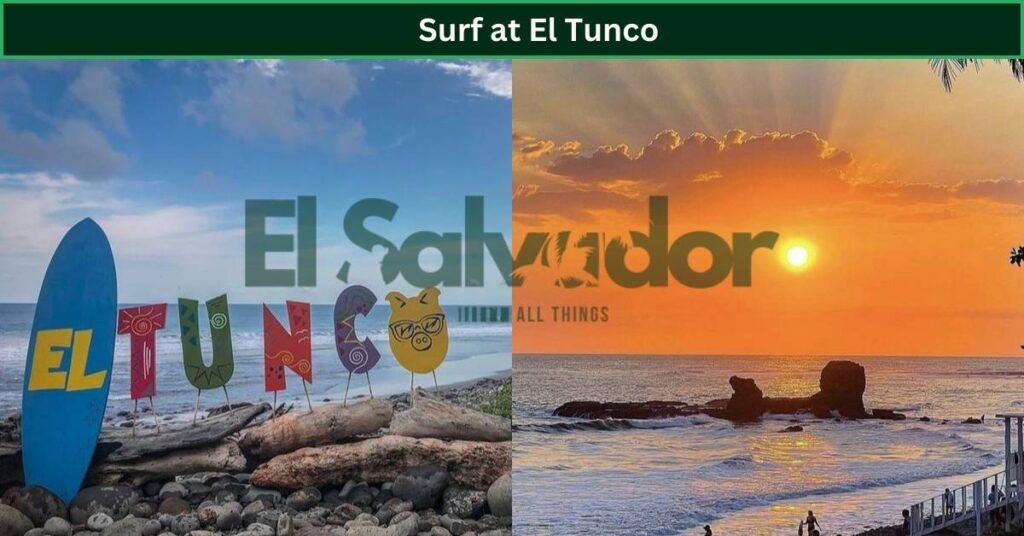
Hike Santa Ana Volcano
For an unforgettable adventure, hike up Santa Ana Volcano, El Salvador’s highest and most active volcano. The trail leads you through coffee plantations and cloud forests before reaching the stunning crater lake at the top. The panoramic views of the surrounding countryside and other volcanoes are truly breathtaking.
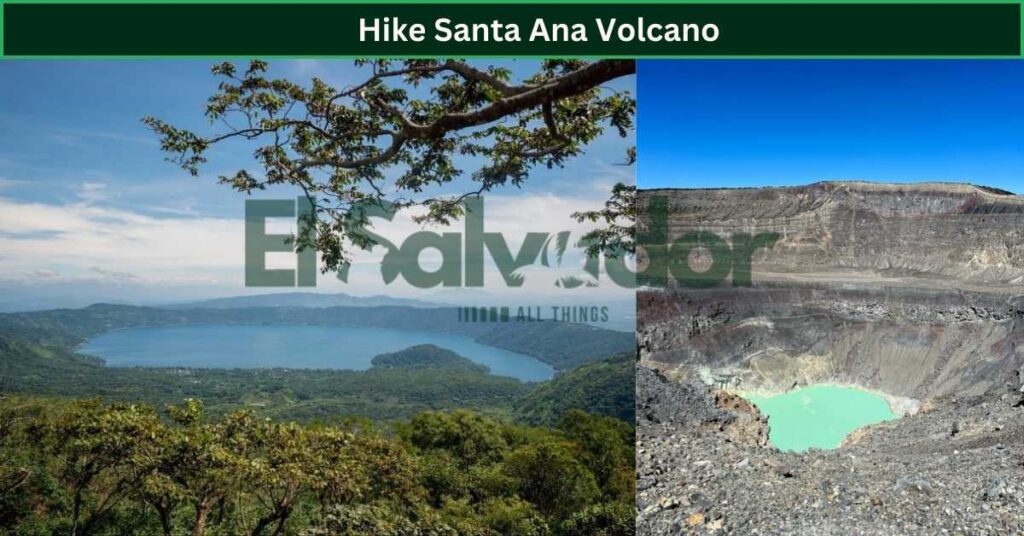
Visit the Joya de Cerén Archaeological Site
Step back in time at Joya de Cerén, a UNESCO World Heritage site often referred to as the “Pompeii of the Americas.” This ancient village was buried under volcanic ash 1,400 years ago, preserving it in remarkable detail. Walking through this site offers a unique insight into the daily lives of the Salvadoran ancestors.
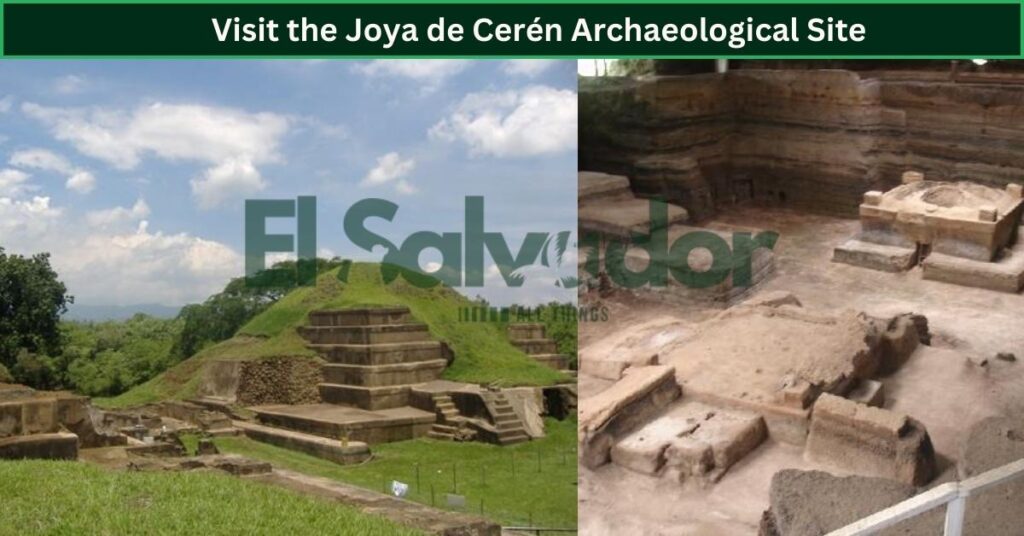
Stroll through Suchitoto
Suchitoto is a charming colonial town that feels like it’s straight out of a painting. Wander through the cobblestone streets, admire the beautiful architecture, and visit art galleries and craft shops. The town overlooks the serene Lake Suchitlán, which is perfect for a leisurely boat ride or a bird-watching excursion.
Each of these experiences encapsulates the beauty and spirit of El Salvador, making them must-dos on your travel itinerary.
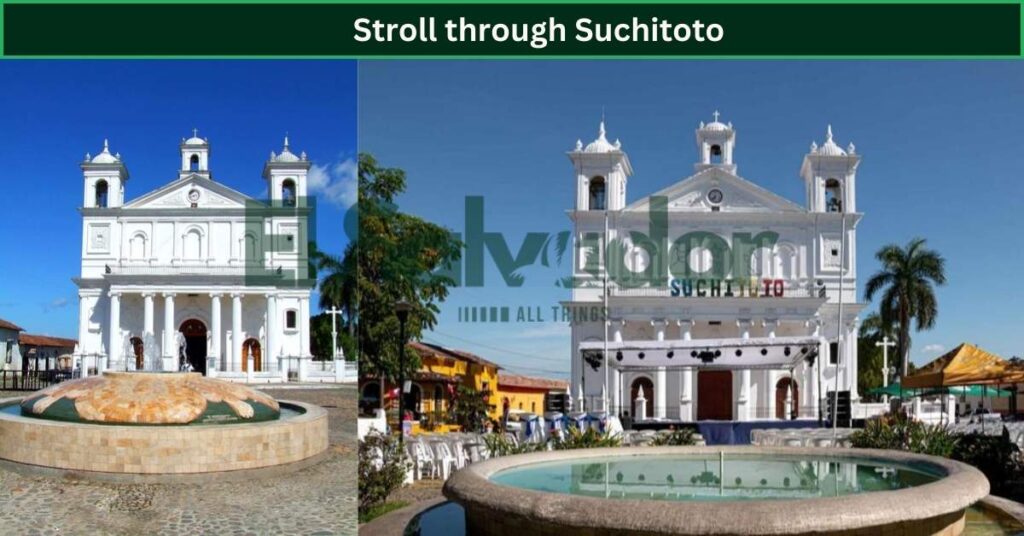
Salvadoran Civil War Tour
Explore El Salvador’s complex past through the Salvadoran Civil War Tour, where you’ll visit historical sites, museums, and memorials that reveal the stories of resilience, struggle, and hope during the country’s conflict in the 1980s. It’s a powerful experience for those interested in history and human rights.
Malacatiupán Hot Waterfalls
A hidden gem in western El Salvador, Malacatiupán Hot Waterfalls combine natural beauty with warm thermal waters flowing over volcanic rocks. Perfect for a soothing soak and a bit of adventure, this unique waterfall is a must-visit for nature lovers.
Travel Itineraries for El Salvador
Our suggested El Salvador curated trips take you through highlights like Ruta de las Flores, Joya de Cerén, and the Pacific Coast. Here are two curated travel itineraries to help you make the most of your time in this vibrant country.
Weekend Getaway – Perfect Short Trip
Day 1: San Salvador – Start your trip in the capital. Visit the National Palace and the Metropolitan Cathedral in the morning, followed by a lunch at a local pupuseria to try the national dish, pupusas. In the afternoon, explore the Museum of Art of El Salvador (MARTE) and end your day with a dinner in the Zona Rosa. For nightlife lovers, Zona Rosa also offers some of the best entertainment in El Salvador, from trendy bars to live music.
Day 2: La Libertad – Head to the coast to the town of La Libertad, famous for its beaches and surf spots. Spend your morning surfing or relaxing on El Sunzal beach. Enjoy fresh seafood by the pier at lunchtime. In the afternoon, take a short drive to El Tunco for some souvenir shopping and a beautiful sunset view before returning to San Salvador.
Extended Stay – Exploring El Salvador in Depth
Week 1:
- Days 1-3: San Salvador – Dive deep into the culture and history of the capital. Spend a day hiking or biking in El Boquerón National Park.
- Day 4: Suchitoto – Travel to Suchitoto to enjoy its colonial charm, art galleries, and Lake Suchitlán.
- Days 5-6: Joya de Cerén and Santa Ana – Visit the archaeological site of Joya de Cerén and spend the next day around Santa Ana Volcano.
Week 2:
- Day 7: Ruta de Las Flores – Drive through this scenic route, stopping at small towns like Nahuizalco and Juayúa for local crafts and food markets.
- Days 8-9: Tazumal and Coatepeque Lake – Explore the ruins of Tazumal and spend a relaxing day at Coatepeque Lake, ideal for kayaking or swimming.
- Days 10-12: El Tunco and El Cuco – Return to the coast to spend a few days surfing and enjoying the beach life. Visit El Cuco, a less crowded beach with golden sands and tranquil waves.
- Day 13: Return to San Salvador – Spend your last day shopping for crafts in the Mercado Nacional de Artesanías and enjoying a farewell dinner.
These itineraries offer a blend of cultural immersion, adventure, and relaxation to help you experience the best of El Salvador, whether you’re staying for a weekend or exploring more deeply.
🏄♂️ Download Your Free El Salvador Itinerary
Download PDFLanguage and Communication in El Salvador
When traveling to El Salvador, it’s helpful to know about the local language and communication styles to enhance your experience and interact more effectively with the locals.
Primary Language
Spanish is the official language of El Salvador. It is spoken by nearly all residents, so knowing some basic Spanish phrases can be very beneficial for travelers. English is commonly understood in major tourist areas, hotels, and among younger Salvadorans, especially those involved in the tourism industry. However, in rural areas, Spanish dominates, and few people speak English. Here is English to Spanish Translator.
Useful Spanish Phrases
Here are a few basic Spanish phrases that might come in handy:
- Hola (Hello)
- Adiós (Goodbye)
- Por favor (Please)
- Gracias (Thank you)
- ¿Cuánto cuesta? (How much does it cost?)
- ¿Dónde está el baño? (Where is the bathroom?)
Communication Style
Salvadorans are known for their friendliness and warmth. When communicating, they value politeness and personal interaction. It’s common for conversations to include physical contact like handshakes or pats on the back. Respectful greetings and farewells are important in Salvadoran culture, so always take the time to greet and say goodbye properly.
Tips for Effective Communication
- Be polite and patient: Even if there’s a language barrier, being polite and patient goes a long way.
- Use non-verbal cues: If you’re struggling with language, non-verbal communication like gestures can be very helpful.
- Learn local slang: Salvadorans use local expressions and slang in their daily conversations. Understanding these can make interactions smoother and more enjoyable.
Understanding the language and communication nuances in El Salvador will not only make your travel easier but also more enriching as you navigate through this captivating country.
Best Time to Visit El Salvador
Choosing the right time to visit El Salvador can greatly enhance your travel experience. The country’s climate is tropical, with distinct wet and dry seasons, each offering different opportunities for travelers.
Dry Season (November to April)
The dry season, known locally as “verano” (summer), is the best time to visit El Salvador if you prefer sunny, warm weather. This period is ideal for beach activities, surfing, and exploring outdoor attractions like volcanoes and hiking trails. The weather is generally cooler and more comfortable, especially in the evenings.
Wet Season (May to October)
The wet season, or “invierno” (winter), sees more rainfall, typically in the afternoons and evenings. Although this might sound less appealing, the rains bring lush greenery, making it a perfect time for photographers and nature lovers. Additionally, this season is less crowded, and you might find better deals on accommodations and tours.
Special Considerations
- Festivals: If you’re interested in culture, plan your visit around local festivals. For example, the colorful “Festival of El Salvador del Mundo” in August offers a unique cultural experience.
- Surf Conditions: For surfers, the best waves are typically from March to October, with peak swells in June and July.
Overall, the best time to visit El Salvador depends on what you want to do and see. The dry season offers more predictable weather for outdoor activities, while the wet season provides a more tranquil and lush travel experience.
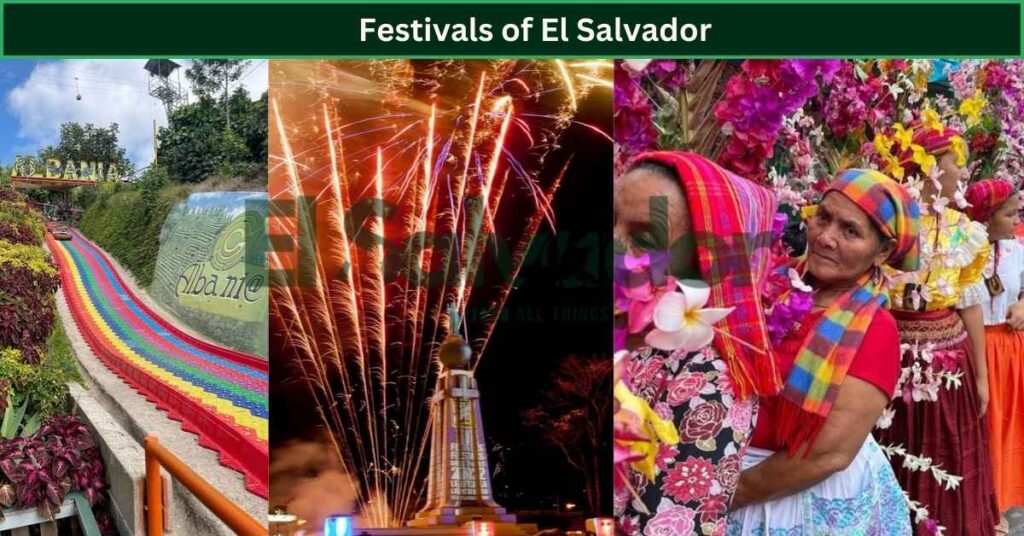
Visas and Entry Requirements for El Salvador
When planning your trip to El Salvador, understanding the visa and entry requirements is crucial to ensure a smooth entry. For first-time visitors, this complete travel guide El Salvador helps you discover the country’s highlights and hidden gems with ease.
- Visa Exemptions: Citizens from the United States, Canada, Australia, and most European countries can enter El Salvador without a visa for up to 90 days.
- Passport Validity: Your passport must be valid for at least six months beyond your planned departure date from El Salvador.
- Entry Stamp: Upon arrival, make sure your passport is stamped by immigration authorities to avoid issues during your stay.
- Tourist Card: Some travelers may be required to purchase a tourist card upon arrival, costing approximately $10 USD.
Always check the latest travel advisories and entry requirements from official sources or your embassy before traveling, as regulations can change.
Navigating El Salvador
When it comes to getting around El Salvador, travelers can choose from buses, minibuses, rideshares, or car rentals. Navigating El Salvador efficiently requires familiarity with these transportation options, from airports to local transit, as well as understanding the essentials of renting and driving vehicles.
Transportation Tips: From Airports to Local Transit
Airports: El Salvador International Airport, located near San Salvador, is the main gateway to the country. Upon arrival, you can choose from several transportation options:
- Taxis: Official airport taxis are available and offer a safe and convenient way to reach your destination.
- Rideshare: Apps like Uber operate in the area, providing another safe and convenient option.
- Buses: Local buses are available but may be less comfortable and more challenging to navigate for first-time visitors.
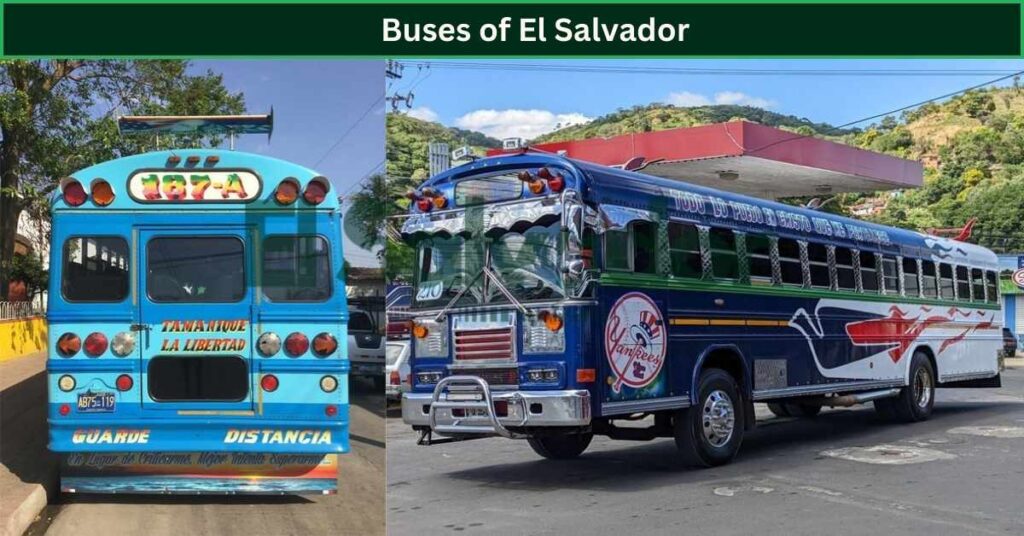
Local Transit:
- Buses: The most common form of public transportation within cities and across the country. They are inexpensive but can be crowded and less reliable in terms of schedule.
- Minibuses: These operate similar to buses but are often faster and slightly more expensive, serving both urban and rural routes.
Renting Vehicles and Driving Regulations
Renting Vehicles:
- Availability: Car rental agencies are available at the airport and in major cities. It’s advisable to book in advance.
- Requirements: You’ll typically need a valid driver’s license from your home country, a credit card for a deposit, and you must be at least 21 years old.
Driving Regulations:
- Driving License: Your home country’s driving license is generally accepted along with an international driving permit.
- Road Rules: Drive on the right side of the road. Seat belts are mandatory, and the use of mobile phones while driving is prohibited without a hands-free system.
- Speed Limits and Signs: Observe speed limits, which are usually posted in kilometers per hour. Road signs follow international standards.
Understanding these tips and regulations will help you navigate El Salvador more confidently, whether you choose public transit or a private vehicle.
Backpacking in El Salvador
El Salvador is an excellent destination for backpackers looking for adventure, culture, and natural beauty on a budget. Here’s what you need to know about routes and budgeting.
Top Backpacker Routes
- The Flower Route (Ruta de las Flores): This popular route takes you through charming towns like Juayúa, Apaneca, and Ataco. It’s famous for coffee plantations, weekend food festivals, and beautiful landscapes.
- Pacific Coast Route: Start at La Libertad, known for its surfing, and move down the coast to sun-soaked beaches like El Tunco, El Zonte, and El Cuco.
- Eastern Circuit: Includes San Miguel, one of the country’s largest cities, and nearby sites like the Gulf of Fonseca and Perquín, known for its war history and natural reserves.
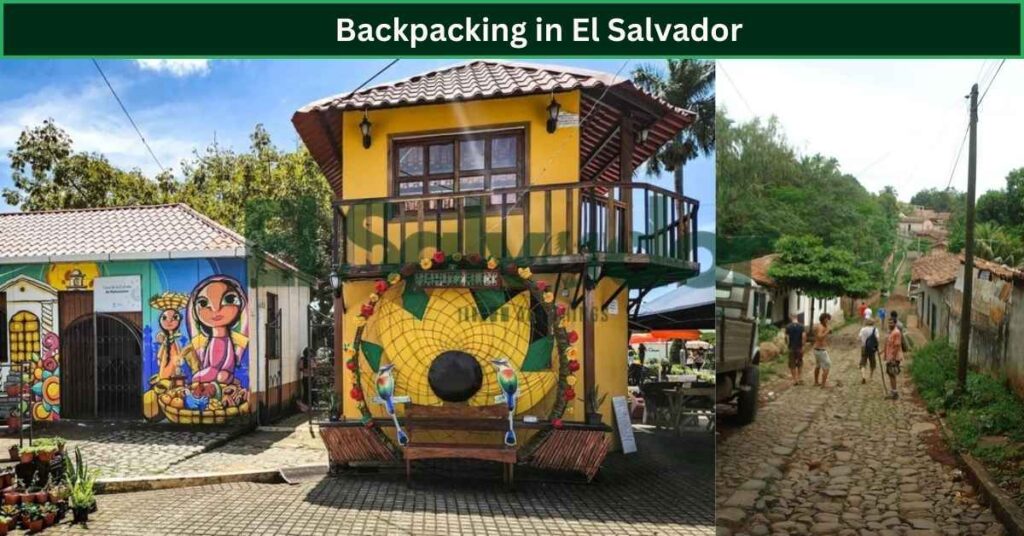
Budgeting for Backpackers
- Accommodation: Hostels are available across the country, with prices ranging from $10 to $15 per night for a dormitory bed. Private rooms can cost around $20 to $30.
- Food: Street food and local eateries are both delicious and affordable, with meals typically costing between $2 and $5.
- Transportation: Local buses are the cheapest way to travel, with fares usually under $1. Renting a motorbike or sharing rides can also be cost-effective for longer stays.
- Activities: Many natural attractions like beaches and hikes are free, but expect to pay entrance fees for national parks and archaeological sites, usually between $1 and $3.
By following these routes and managing your budget, you can have a rewarding backpacking experience in El Salvador, exploring its rich culture and stunning landscapes economically.
Download Your Free El Salvador Itinerary
Download PDFAccommodation Guide: Where to Stay in El Salvador
For those looking for El Salvador luxury travel, the country offers world-class resorts along its Pacific coastline, blending comfort, style, and stunning views.
Luxury Resorts
For those seeking comfort and high-end amenities, El Salvador’s luxury resorts mainly cluster around the beautiful beaches and major tourist spots. Notable options include:
- Royal Decameron Salinitas: Located on the western coast, this resort offers all-inclusive packages with direct beach access and multiple swimming pools.
- Mizata Point Resort: A boutique option for those who enjoy surfing and luxury, located on the surf-rich Pacific coast.
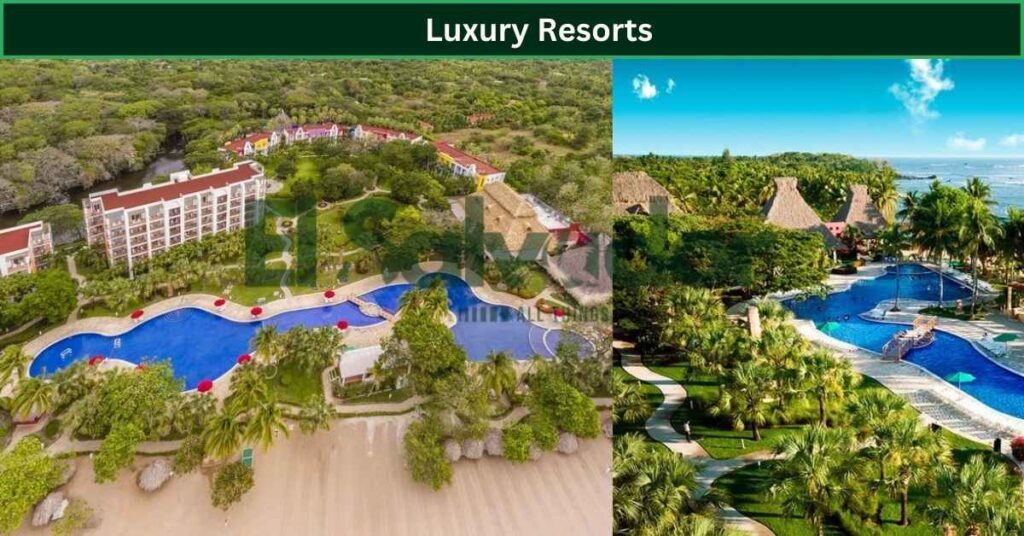
Mid-Range Hotels
Mid-range hotels provide comfortable accommodations with good services at reasonable prices. Examples include:
- Comfort Inn Real La Union: Situated near the Gulf of Fonseca, this hotel offers great views and easy access to local attractions.
- Hotel Tazumal House: Located in San Salvador, it offers modern amenities with close proximity to historical sites and shopping areas.
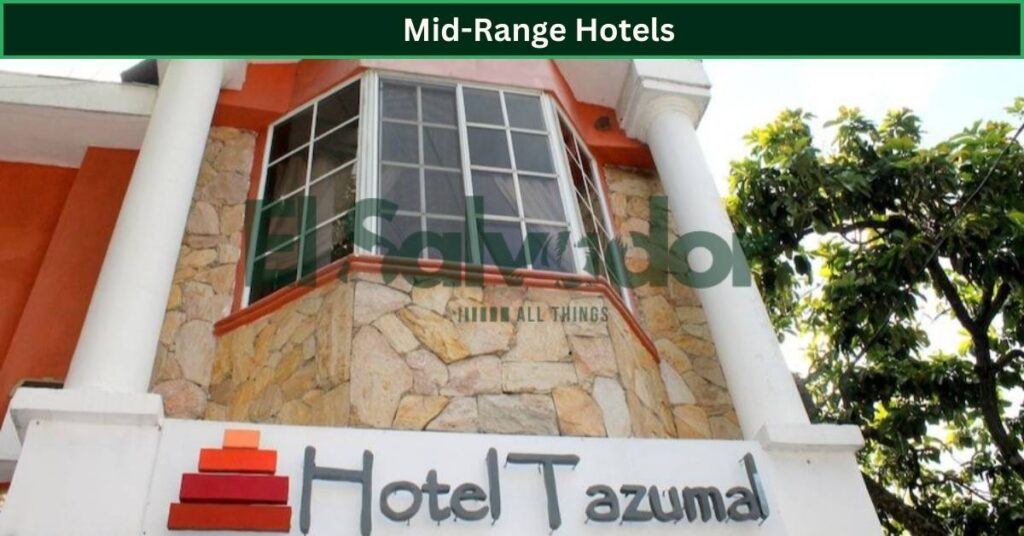
Budget Lodgings
Backpackers and budget travelers can choose from numerous hostels and guesthouses that provide affordable lodging without sacrificing cleanliness or safety. Some popular choices are:
- La Zona Hostel: Located in the popular El Tunco area, perfect for beach lovers and surfers.
- Hostal Dona Marta: Situated in San Salvador, this family-run hostel offers a homely atmosphere and is a great base for exploring the city.
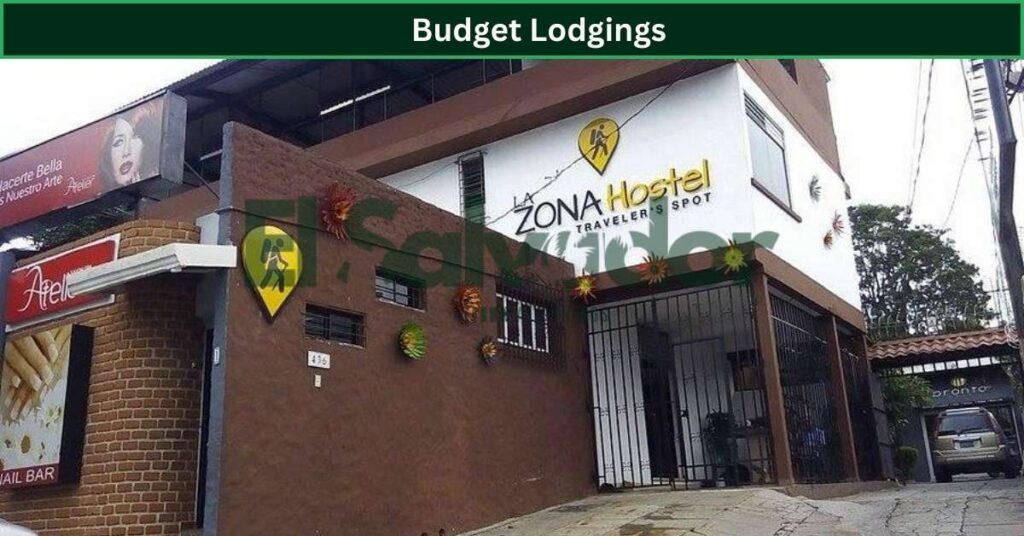
Interactive Map Integration
For easier planning, many travel websites offer interactive maps where you can view the location of different accommodations, check prices, and read reviews from other travelers. This tool is invaluable for finding accommodations that best fit your itinerary and budget.
Managing Travel Expenses in El Salvador
Managing your budget effectively is crucial for a stress-free trip to El Salvador. Here’s how to understand and manage your costs, from daily expenses to unexpected charges.
Understanding Costs: Daily Spend to Hidden Charges
- Daily Spend: On average, budget travelers can expect to spend around $30-$50 per day, including accommodations, meals, and transportation. Mid-range travelers might spend $50-$100 per day, while those preferring luxury could spend upwards of $100 per day.
- Hidden Charges: Be aware of potential hidden charges such as airport departure taxes, hotel service charges, or fees for using credit cards in some places. Always ask for detailed billing to avoid surprises.
Money-Saving Tips: Discounts and Deals
- Travel Off-Peak: Visiting during the shoulder seasons (early May or late October) can result in lower prices for flights and accommodations.
- Eat Local: Dining at local eateries or street vendors instead of tourist restaurants can dramatically reduce your food expenses.
- Public Transportation: Utilize buses and public transport options instead of taxis or car rentals for everyday travel.
- Discount Cards and Deals: Look for tourist discount cards offering reduced rates on attractions, or check online deal sites like Groupon for special offers in your destination.
- Accommodation Savings: Consider hostels, guesthouses, or Airbnb options instead of hotels. Booking accommodations with kitchen facilities can also save money by cooking your own meals.
By being aware of costs and taking advantage of these money-saving tips, you can enjoy your trip to El Salvador without breaking the bank.
Financial Essentials for El Salvador
Understanding the financial basics is key to a smooth travel experience in El Salvador. Here’s a guide to currency, money exchange, and banking services.
Currency Guide: Exchanging Money and Handling Cash
- Currency Used: El Salvador uses the US Dollar as its official currency, simplifying the financial transactions for travelers from the United States.
- Exchanging Money: There is little need to exchange money if you are carrying US dollars. However, for those coming with other currencies, it’s best to exchange at banks or authorized exchange offices in the city centers.
- Handling Cash: While carrying some cash is necessary, especially in rural or less touristy areas, it’s wise not to carry large amounts due to safety concerns. Always split your cash and store it in different places.
- Bitcoin Use: In addition to the US Dollar, Bitcoin in El Salvador is also legally recognized. While not widely used in all areas, some businesses and ATMs, especially in tourist spots, accept Bitcoin, offering an alternative digital payment option for tech-savvy travelers.
Banking Services: ATMs and Card Usage
- ATMs: They are widely available in urban areas and major tourist destinations. They offer a convenient way to withdraw cash as needed. Be sure to check with your bank about international withdrawal fees.
- Card Usage: Credit and debit cards are accepted in most hotels, restaurants, and shops in larger cities. However, it’s essential to have cash when traveling to smaller towns or rural areas, as card facilities may not be available.
- Banking Hours: Typically, banks are open from Monday to Friday, from 9:00 AM to 4:00 PM, and some may open on Saturday mornings. It’s advisable to handle your banking needs early in your visit or in major cities to avoid inconveniences.
By familiarizing yourself with these financial essentials, you can ensure that your monetary transactions in El Salvador are hassle-free, allowing you to focus on enjoying your visit.
Connectivity in El Salvador
Staying connected is crucial for most travelers today. Here’s how to manage connectivity effectively while in El Salvador, from choosing the right SIM card to accessing Wi-Fi.
Choosing the Right SIM Card
- Providers: The main mobile network operators in El Salvador are Claro, Tigo, and Movistar. Each offers various prepaid SIM card options, which can be easily purchased at airports, malls, and stores.
- Registration: Buying a SIM card typically requires a passport for registration. It’s a straightforward process that can be completed at the time of purchase.
- Packages: Look for packages that include data, local, and international calling minutes. These are often the most cost-effective for travelers and can be recharged online or at local stores.
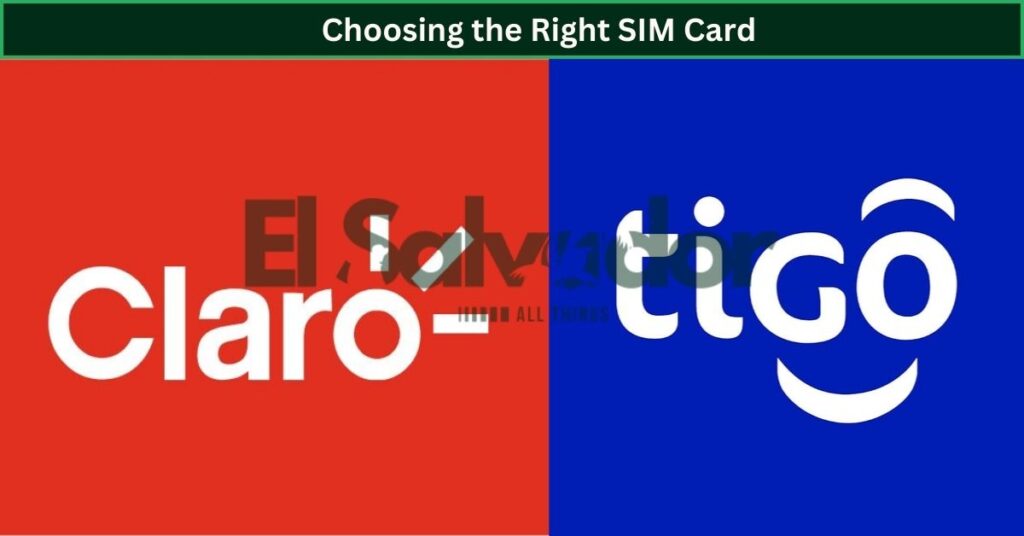
Wi-Fi Accessibility and Internet Tips
- Wi-Fi Availability: Most hotels, cafes, and restaurants in urban areas offer free Wi-Fi. The connectivity is generally reliable in cities, but can be spotty in remote or rural areas.
- Public Wi-Fi: Some public areas like parks or squares may offer free Wi-Fi. Always use a VPN when connecting to public Wi-Fi networks to protect your data and maintain privacy.
- Internet Cafes: For those needing more robust internet access, internet cafes are available in larger towns and cities. They offer access at reasonable rates.
By understanding these connectivity options, you can easily keep in touch with friends and family, manage travel plans, and access important information throughout your trip to El Salvador.
Concluding Your Travel Guide
Before you embark on your adventure to El Salvador, here’s a checklist to ensure you have everything covered for a smooth and enjoyable trip.
Things to Know Before Traveling to El Salvador
Before you start traveling to El Salvador, it’s important to understand local customs, currency, and safety tips. These quick pointers will help you make the most of your trip and avoid common mistakes.
- Passport and Documents: Ensure your passport is valid for at least six months after your planned return. Keep copies of your passport, visa (if required), travel insurance, and important documents both digitally and in print.
- Vaccinations: Check with your healthcare provider for recommended vaccinations and ensure that your routine vaccines are up to date.
- Financial Preparations: Inform your bank of your travel plans to avoid any issues with your credit or debit cards abroad. Carry enough US dollars in small denominations and ensure you understand the currency handling tips.
- Packing Essentials: Pack according to the weather, with lightweight clothing for the heat and a rain jacket or umbrella if traveling during the wet season. Include a first aid kit, medications, sunscreen, insect repellent, and any personal hygiene products.
- Local SIM Card: Decide whether to purchase a local SIM card for better connectivity and data rates, or check international plans with your current provider.
- Accommodation and Transportation: Confirm all bookings for accommodation and transportation. Consider downloading maps or travel apps that can be used offline.
- Cultural Research: Familiarize yourself with local customs, cultural etiquette, and basic Spanish phrases to enrich your interaction with locals.
- Emergency Information: Keep a list of emergency contacts, including local emergency numbers, your country’s embassy or consulate in El Salvador, and any personal emergency contacts.
By completing these checks before your departure, you can minimize potential issues and ensure that your trip to El Salvador is as enjoyable and hassle-free as possible. These practical El Salvador travel tips will make your journey smoother, safer, and more rewarding.
Planning Your Trip: If you’re unsure where to start, this 1-week El Salvador itinerary offers a perfect blend of adventure, culture, and relaxation. You can also work with an El Salvador travel curator to customize a trip that matches your style — whether you want adventure, history, or relaxation.
Community Platform for Travelers
When traveling to El Salvador, consider exploring historical sites like the Mayan ruins of El Tazumal in Chalchuapa. Enjoy natural attractions such as the volcanic lake, Lago de Coatepeque, and visit the tranquil beaches on the west coast, like El Espino. Don’t miss the Ruta de las Flores, a scenic route through charming towns, each with unique local culture and crafts. These tips come from travelers who have shared their firsthand experiences of the country.
Travelers to El Salvador have shared mixed experiences regarding safety, with some reporting a secure and enjoyable visit, particularly in tourist-frequented areas like Lake Ilopango and Suchitoto. These positive reports often highlight effective local security measures and an overall welcoming atmosphere for tourists.
However, concerns about safety persist, especially given the presence of notorious gangs like Mara Salvatrucha and Mara 18. While tourist destinations generally offer a higher level of security, it’s crucial for visitors to exercise caution, avoid less secure areas, and adhere to safety advice from reliable local sources to ensure a safe trip.
More Guides from All Things El Salvador For Travelers
- Releasing Baby Sea Turtles in El Salvador: Witness nature’s most touching journey
Download Your Free El Salvador Itinerary
Download PDFConclusion
This El Salvador travel guide is designed to help you make the most of your trip. Whether you’re into surfing, history, or gourmet dining, El Salvador tourism has something for everyone. From budget backpacking to El Salvador luxury travel, your perfect El Salvador vacation is waiting.
FAQs
Is it safe to travel in El Salvador right now?
Traveling to El Salvador has safety concerns like any other country; it’s recommended to stay informed about current travel advisories and exercise caution, especially in less secure areas.
What are the best months to visit El Salvador?
The best time to visit El Salvador is during the dry season from November to April, when the weather is sunny and pleasant.
What numbers not to wear in El Salvador?
It’s advisable to avoid displaying numbers associated with local gangs, particularly 13 and 18, to prevent any unwanted attention or misunderstandings.
How much money should I take to El Salvador for a week?
Depending on your spending habits, usually $300 to $500 should cover daily expenses like food, local travel, and some entertainment.
Can you use US money in El Salvador?
Yes, the US dollar is the official currency of El Salvador, so you can freely use it for all transactions.
How much does a Coke cost in El Salvador?
A bottle of Coke in El Salvador typically costs around $0.60 to $1.
Is food expensive in El Salvador?
Food in El Salvador is generally affordable, with street food and local meals costing a few dollars, though dining in upscale restaurants will be more expensive.
How much is $1 in El Salvador?
$1 is equivalent to exactly $1 USD, as the US dollar is the currency used in El Salvador.
How much can $100 USD buy in El Salvador?
$100 USD can cover a week’s worth of budget meals, public transportation, and modest accommodation, or several days of dining out and leisure activities.
